Grande Folly Egmont
Tai Moana Tai Tangata
Ka pari te Tai Moana
Ka timu te Tai Tangata
When the Ocean tide rises, the Human tide recedes.
Takatū ake rā he whare tikanga kore!
He raupatu, he muru i haku whenua tōna tikanga? Kōia!
He pōkahu tōna tikanga? Kōia!
He whakatumatuma, he whakapātari tōna tikanga? Kōia!
He hao ōna tikanga? Kōia!
He kōpeka, he whakamōkihi, he whakamōkeke hoki tōna tikanga? Kōia!
Mō wai te papa? Mō te uki whai muri!
He aha tōna tikanga? He whakauenuku i ngā whenua, i te Māori mana motuhake.
Kia au te moe, kia tau te noho, kia mutu te tohe, kia tau tēnei take.
I haere whenua atu, me hoki whenua mai!
Muru me te Raupatu.
Āta tirohia.
(Te Ingo Ngaia)
A lighthouse was installed at Āwhitu Peninsula in 1874 to guide ships through the net of Taramainuku at Manukau Heads. Only a decade earlier, this peninsula was bombarded by shipboard cannon fire to drive Māori from the area.
In 1880, the Manaia Redoubt was built as a base camp for troops enforcing the confiscation of coastal land from the Waingongoro River to New Plymouth. The following year, the people of Parihaka disrupted the erection of the Cape Egmont lighthouse at Pungarehu. The lighthouse was eventually completed under armed guard during preparations to invade Parihaka in November 1881.
Grande Folly Egmont adapts the stout octagonal shape of the Manukau Heads lighthouse to represent the architecture of the block fort at the Manaia Redoubt. This association twists the characterisation of lighthouses as sentinels to lighthouses as military hardware of the colonial regime presiding over a landscape ready for war. (Anna-Marie White)
(Extracted from Tai Moana Tai Tangata's exhibition catalogue; also read essays about the event)
Join the virtual tour
Get the catalogue
2020
Wood, synthetic polymer paint
6800 x 3180mm
Special thanks to Darren Engelbrecht
photos by Neil Pardington (Ngai Tahi, Ngāti Mamoe, Ngāti Waewae)
- previous work
- /
- next work
- (Tai Moana Tai Tangata)
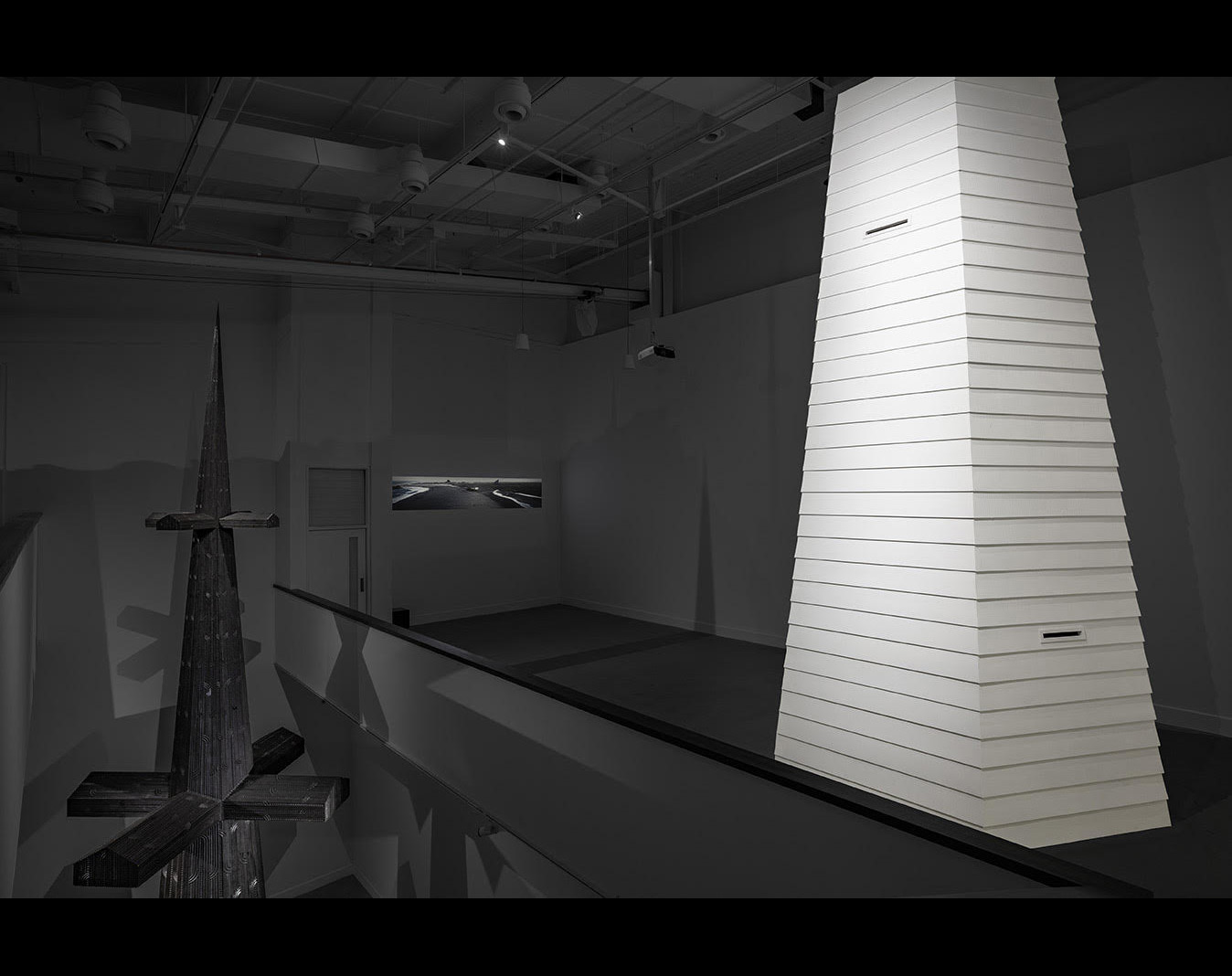
Cease Tide of Wrong-Doing, Manukay video animation and Grande Folly Egmont
left to right, 2020
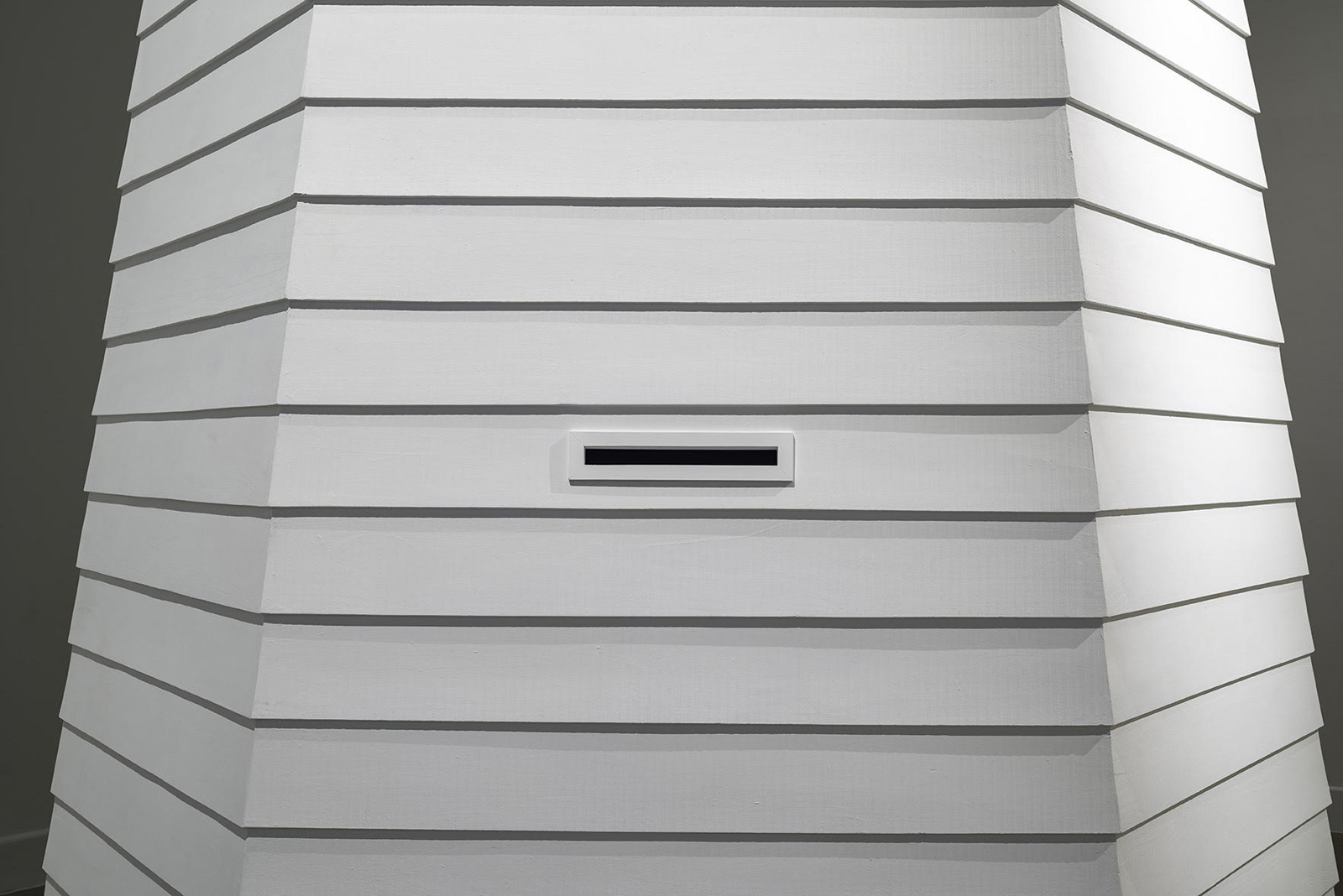
Grande Folly Egmont
2020, Wood, synthetic polymer paint, 6800 x 3180mm
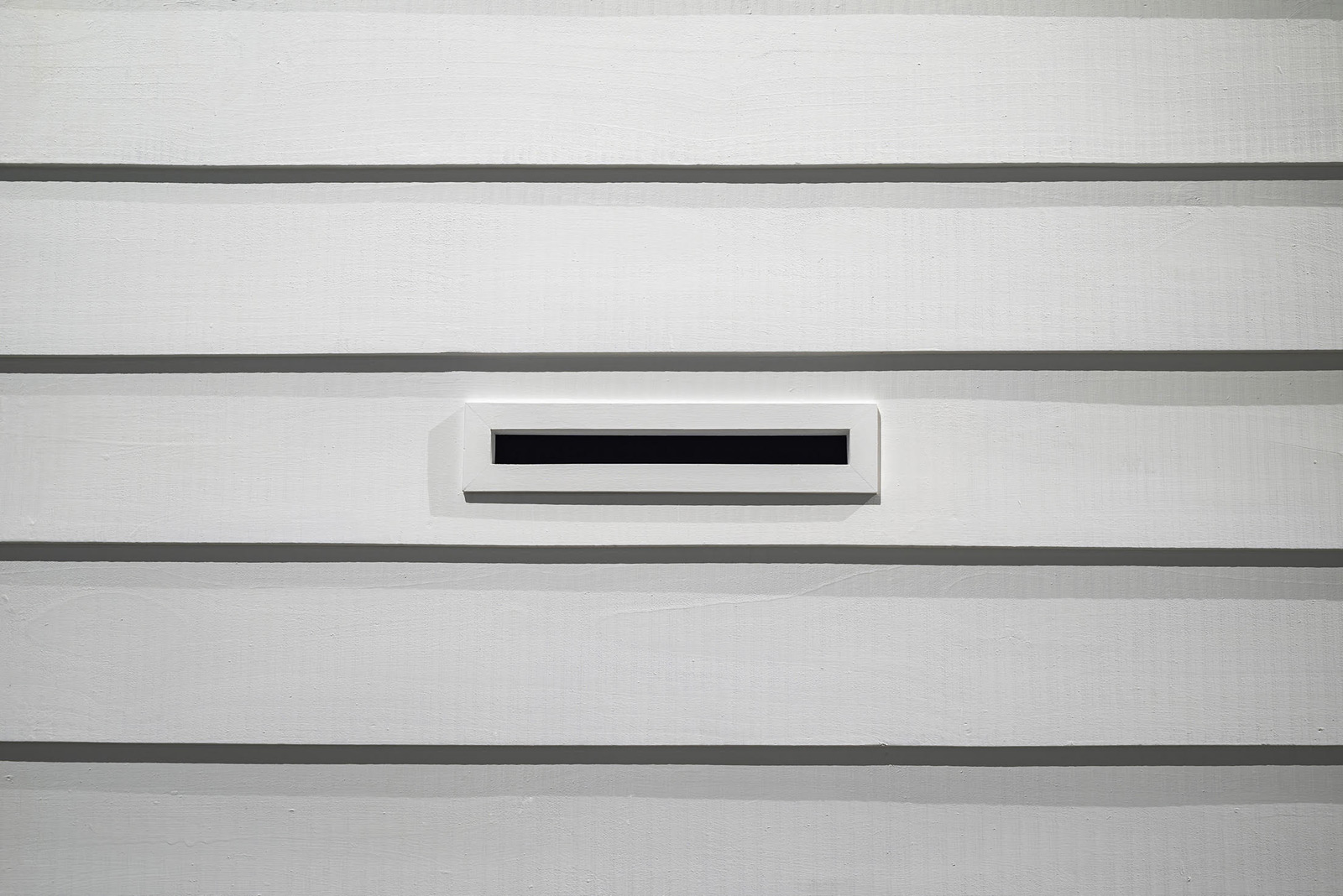
Grande Folly Egmont
2020, Wood, synthetic polymer paint, 6800 x 3180mm
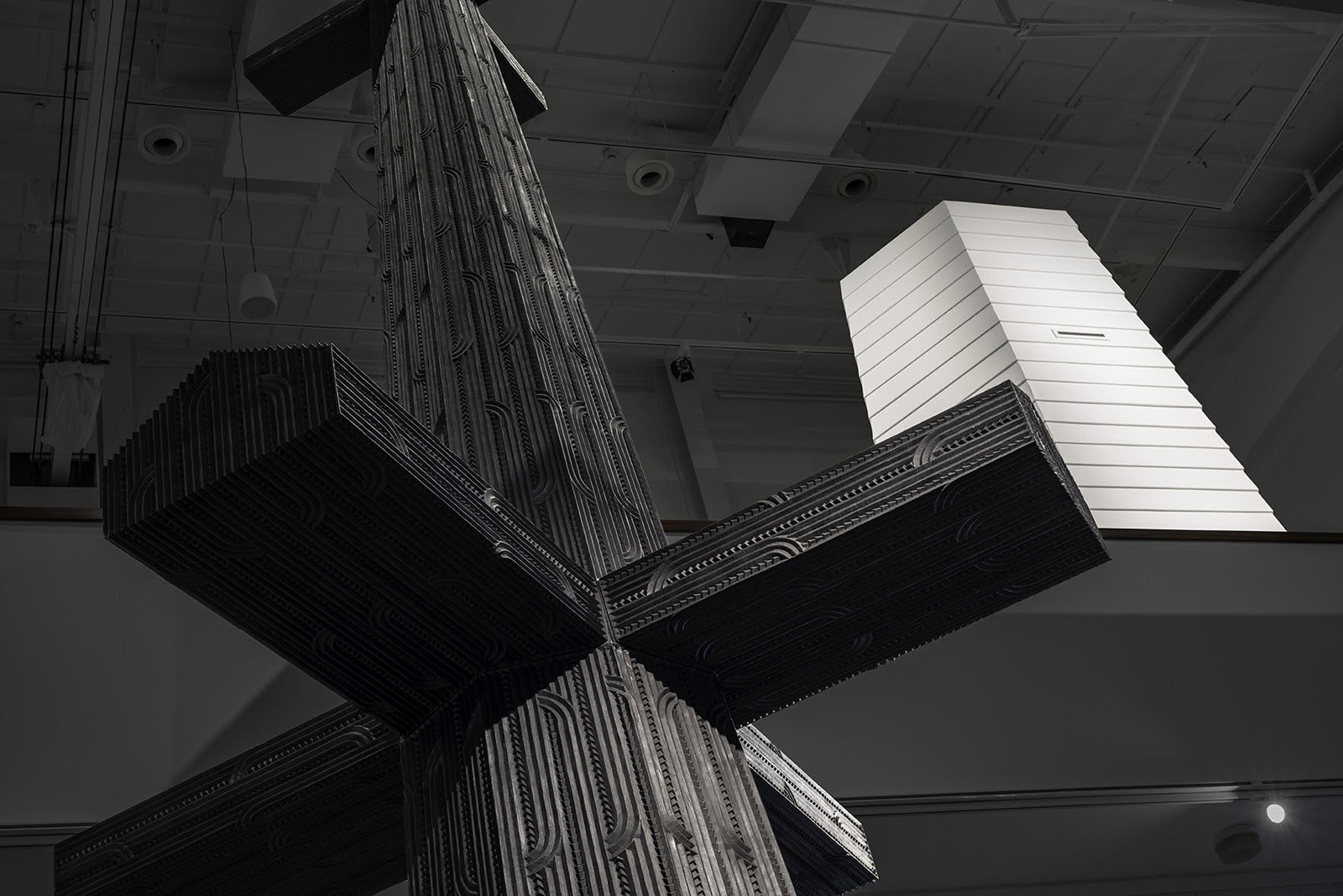
Cease Tide of Wrong-Doing and Grande Folly Egmont
left to right, 2020
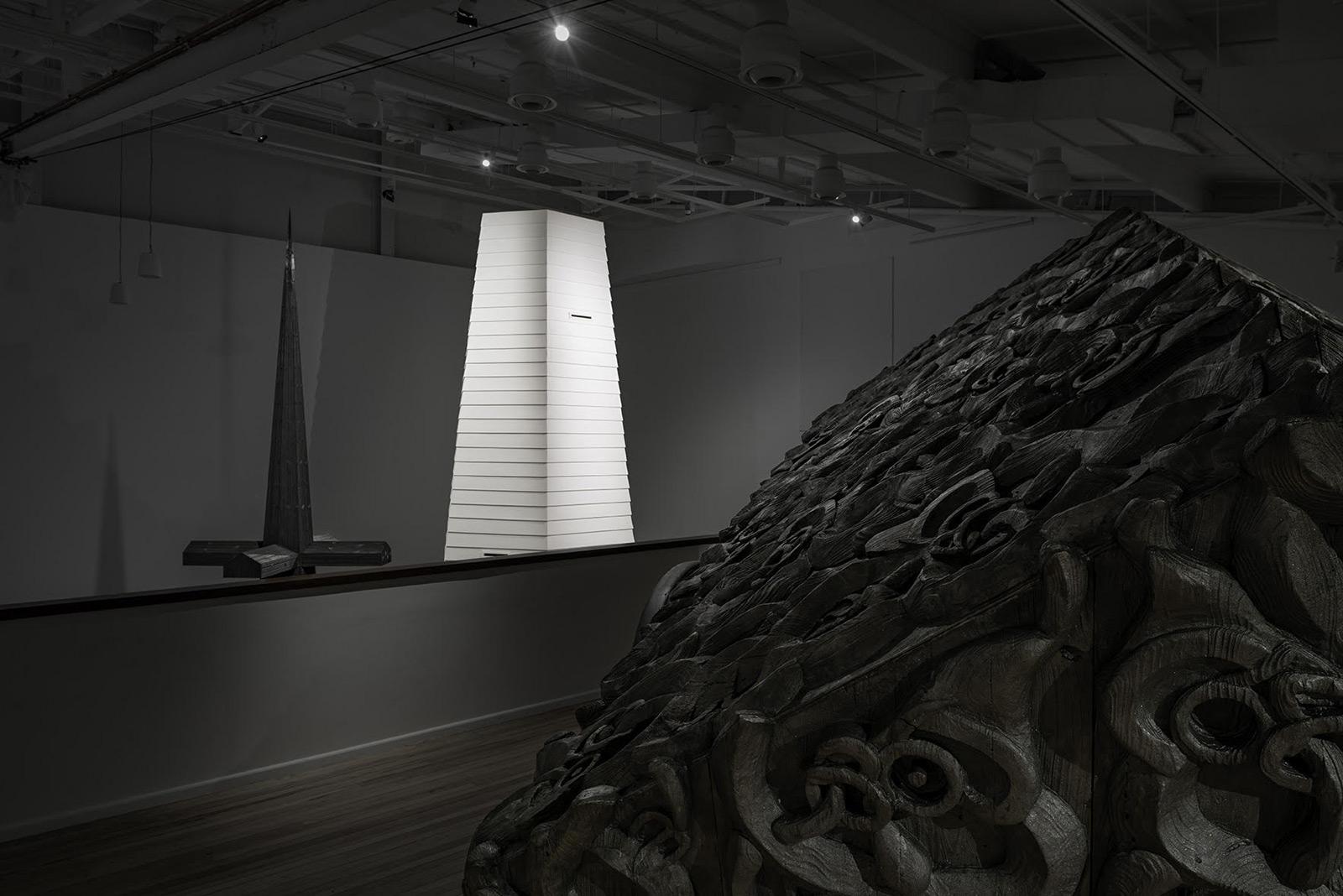
Cease Tide of Wrong-Doing, Grande Folly Egmont and Maungārongo ki te Whenua, Maungārongo ki te Tangata
left to right, 2020
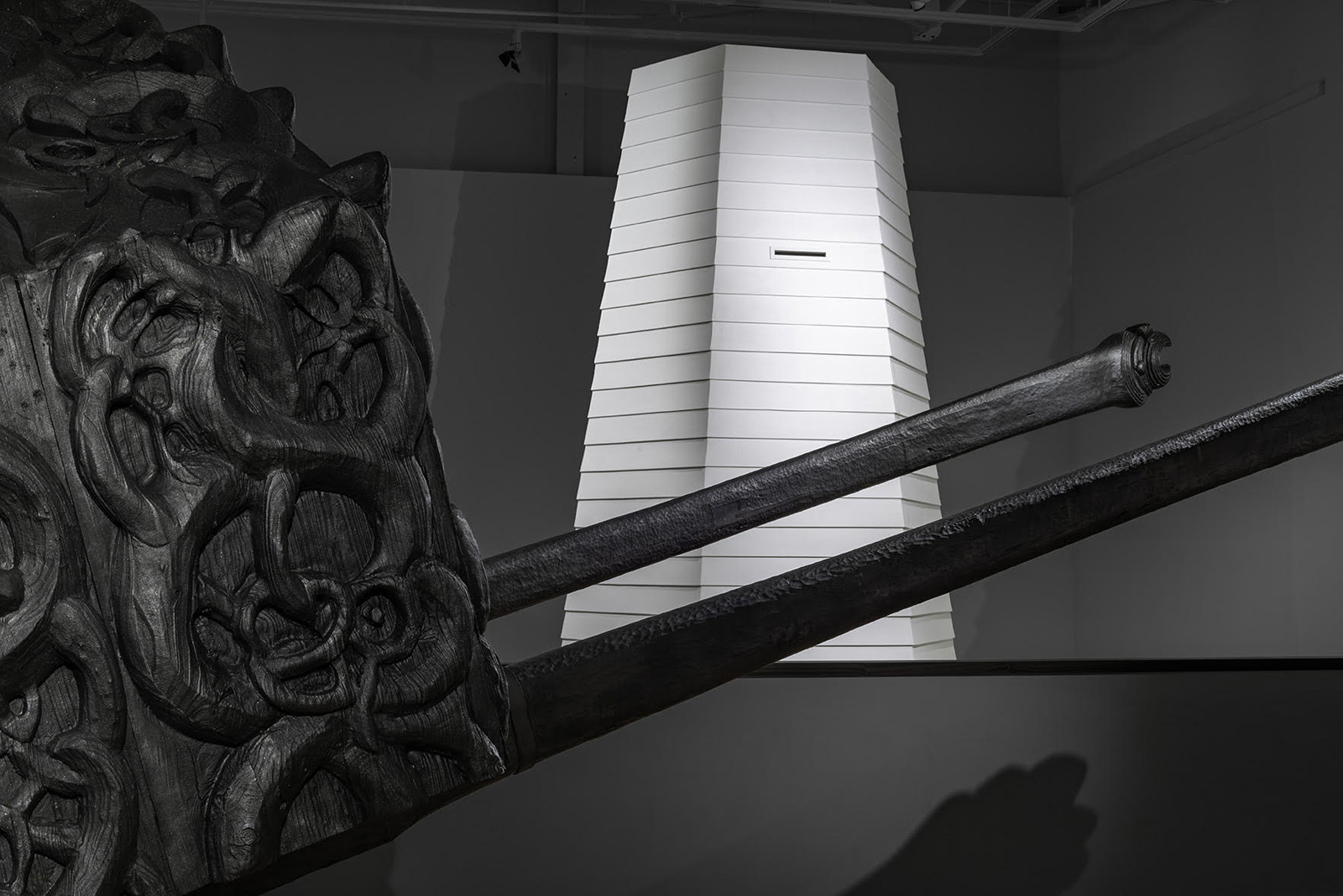
Maungārongo ki te Whenua, Maungārongo ki te Tangata and Grande Folly Egmont
left to right, 2020